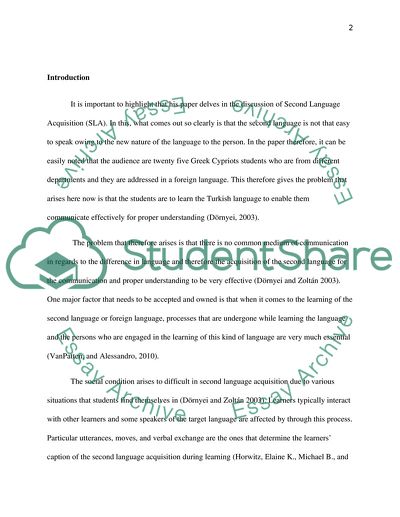Cite this document
(“Second Language Acquisition Essay Example | Topics and Well Written Essays - 2250 words”, n.d.)
Second Language Acquisition Essay Example | Topics and Well Written Essays - 2250 words. Retrieved from https://studentshare.org/education/1647374-my-igniting-question-connected-to-sla-theories-extension-1250-words-more
Second Language Acquisition Essay Example | Topics and Well Written Essays - 2250 words. Retrieved from https://studentshare.org/education/1647374-my-igniting-question-connected-to-sla-theories-extension-1250-words-more
(Second Language Acquisition Essay Example | Topics and Well Written Essays - 2250 Words)
Second Language Acquisition Essay Example | Topics and Well Written Essays - 2250 Words. https://studentshare.org/education/1647374-my-igniting-question-connected-to-sla-theories-extension-1250-words-more.
Second Language Acquisition Essay Example | Topics and Well Written Essays - 2250 Words. https://studentshare.org/education/1647374-my-igniting-question-connected-to-sla-theories-extension-1250-words-more.
“Second Language Acquisition Essay Example | Topics and Well Written Essays - 2250 Words”, n.d. https://studentshare.org/education/1647374-my-igniting-question-connected-to-sla-theories-extension-1250-words-more.


